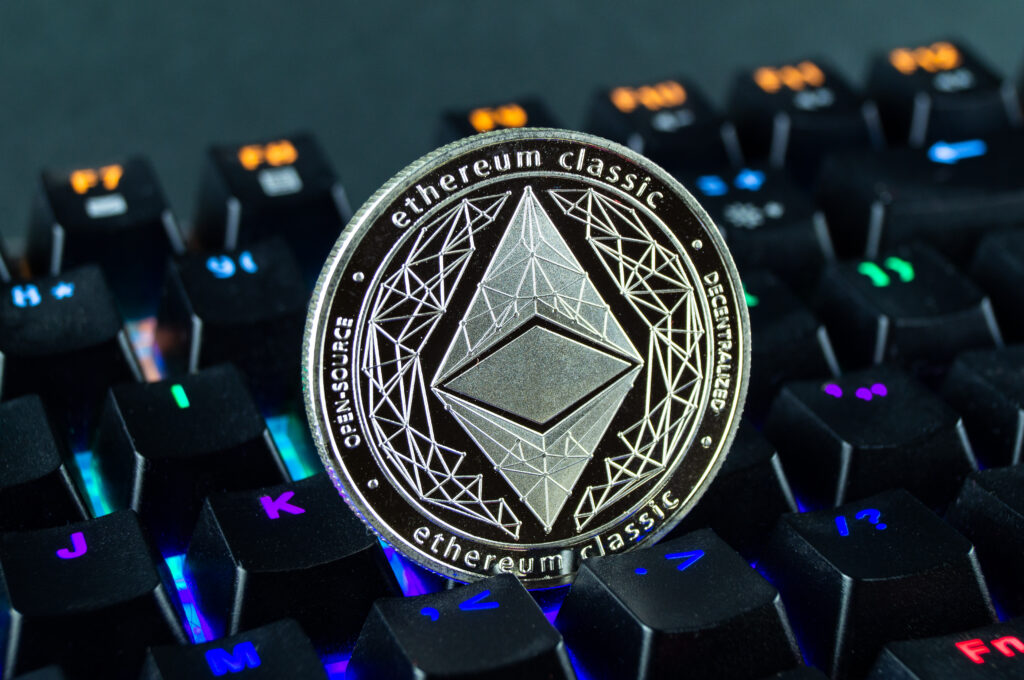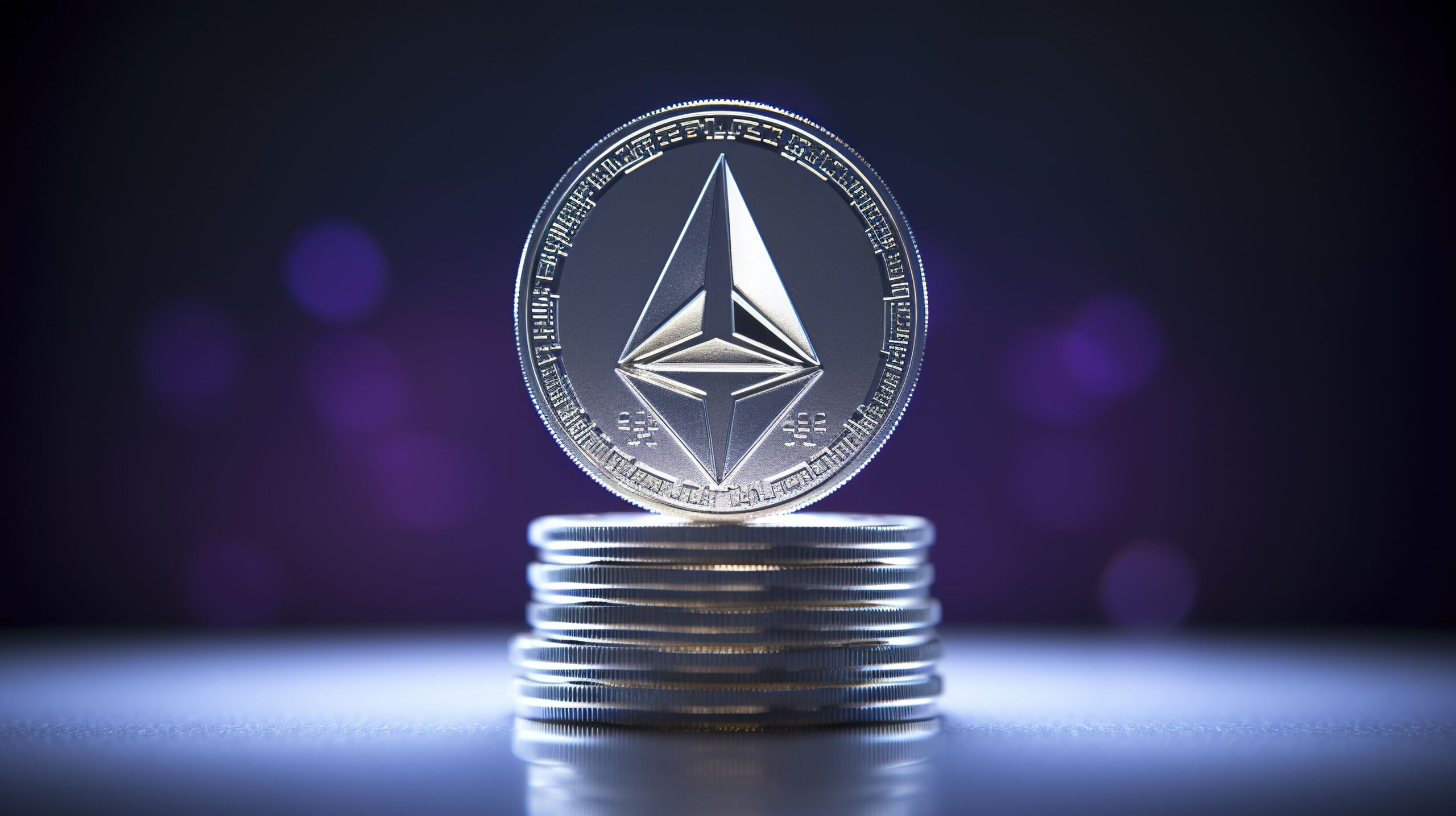Introduction
What is Ethereum? It is a decentralized blockchain solution which is designed to build various dapps with the help of smart contracts and more. This capability has made it a foundational layer for applications that require verifiable neutrality, from financial instruments to digital ownership records. This piece will explore the mechanisms that enable this functionality and its practical implications.
What is Ethereum?
Ethereum is a deterministic state machine maintained by peer-to-peer networking. The transactions (as inputs) are processed through a virtual machine (EVM), and then the output is validated by cryptographic consensus.
Ethereum was built to solve a fundamental problem: how can we create agreements that execute exactly as intended, without relying on fallible human institutions? The answer was to replace legal threat with cryptographic certainty—making trust a feature of the system’s architecture, not a requirement of its participants.
The system was designed to solve a specific problem: how to create digital agreements that are both dynamic and dependable. Traditional contracts rely on legal enforcement; Ethereum contracts rely on cryptographic verification and distributed consensus.
ETH functions as the resource allocation mechanism for this utility. Users spend it to perform operations, and node operators earn it for providing reliable computation and storage. This creates a market for computational resources while securing the network against spam or malicious attacks.
This model has proven particularly valuable for creating financial instruments and ownership systems that operate with algorithmic fairness and transparent rulesets.
History of Ethereum
Ethereum is one of the most popular and oldest blockchain networks. It was started by a blockchain pioneer Vitalik Buterin, who looked at Bitcoin around 2013 and thought, “This is great, but it’s just a calculator. What if we built a full computer?” He wanted a blockchain that could run any kind of application, not just handle money.
Two years later the real test came in. A huge experiment built on top of Ethereum, called The DAO, was attacked by a hacker, and a lot of funds were leaked. Overnight, $50 million was gone. The entire community went into a panic. It led to this brutal, philosophical civil war. Do we break the number one rule of ‘code is law’ to give everyone their money back? The majority said yes. So, they essentially rewrote history, which caused a permanent split and created two competing chains: Ethereum (the new one) and Ethereum Classic (the original).
That event was Ethereum’s messy, real-world stress test. It was the moment the project’s lofty ideals got punched in the mouth by a hard reality. Ethereum didn’t collapse, instead it grew. The community made a tough, pragmatic call, and it shaped everything that came after.
After the crisis, Ethereum had to grow up fast. It couldn’t just be about idealistic code anymore, it had to work in the real world.
So the developers got to work. Their biggest achievement came in 2022 with “The Merge.” This wasn’t some simple update—they completely changed how the network operates, switching from an energy-intensive system to one that’s about 99% more efficient. The crazy part? They did all this while the network kept running normally. No downtime, no interruptions.
The job’s far from finished. Right now, the real focus is on scaling—getting this thing to run faster and cost pennies instead of dollars. The aim is to make it useful for everyday people, not just crypto experts. The dream of an open internet hasn’t changed. They’re just piecing it together slowly, learning from each stumble along the way.

What is the vision of Ethereum?
Ethereum isn’t trying to be a better PayPal or a faster database. It’s trying to rebuild the plumbing of the internet itself.
The vision is a system where people can transact and collaborate directly—without corporations, governments, or banks in the middle. It’s about replacing trust in institutions with trust in code.
That means:
- Sending money like sending an email—directly, without a bank.
- Owning digital items as securely as owning physical ones.
- Running apps that can’t be shut down or censored.
It’s not there yet. The network is still too expensive and slow for everyday use. But every upgrade—like The Merge—is a step toward making this usable for everyone, not just crypto traders. The endgame isn’t just a new technology, it’s a rebalancing of power online.
The best way to understand Ethereum isn’t to look at a technical diagram, but to imagine a bustling, open-air market. No one owns the market, but everyone comes there to build shops, trade goods, and invent new services. That market is the Ethereum ecosystem. It’s messy, creative, and entirely powered by its participants.
Here’s who you’ll find in this market:
The Stall Owners (Smart Contract Developers)
These are the builders. They create the rules of trade using self-executing contracts written in code. Their “stalls” might be a lending service that doesn’t need a bank or an art gallery that can’t be shut down. They build the tools that make everything else possible.
The Market Rules (The EVM)
Every market needs a set of rules everyone agrees to follow. The Ethereum Virtual Machine (EVM) is exactly that. It’s the core set of instructions that ensures a digital contract works the same way for a user in Tokyo as it does for one in Berlin. This consistency is what makes the entire place trustworthy.
The Security Guards (Validators)
Instead of a few bulky guards (miners), the market is now protected by a large crowd of stakeholders. People who have a stake in the market’s success (they’ve locked up their ETH) are randomly chosen to check transactions. If they do their job honestly, they get paid. If they cheat, they lose their stake. It’s security by community, not by force.
The Market Expansion (Upgrades & Layer 2s)
The main market got popular, so the lines got long and fees got high. The solution wasn’t to shut down, but to expand. “Layer 2” solutions are like opening pop-up markets right next door. They handle the crowd off the main street, making things faster and cheaper, but they still use the main market’s trusted rules and security.
The Shoppers and Tinkerers (Users & Community)
A market is nothing without people. This is Ethereum’s secret weapon: a global community of developers, artists, traders, and idealists who are constantly testing, using, and improving everything. They’re the ones who decide what’s useful and what’s not, guiding what gets built next through sheer participation.
You don’t “join” the Ethereum ecosystem like you join a social media platform. You step into it. Some people come to build, some to trade, and some just to see what’s new. But together, they’re building a digital economy that belongs to its users, not its owners.
How Does Ethereum Work?
It helps to imagine Ethereum like a digital organism—a system sustained by code, incentives, and thousands of participants who don’t know each other.
Now let’s break down the processes happening inside:
You Make a Move
It all starts when you sign a transaction—maybe to mint NFT art, lend crypto, or send ETH to a friend. You pay a small fee (gas) for the network to process your request. This isn’t a subscription fee; it’s more like paying for the electricity your action will use on the global computer.
Code Replaces Intermediaries
Many transactions interact with smart contracts—a certain algorithm stored on-chain. These contracts act like vending machines: predictable, self-executing, and impartial. Deposit crypto? The contract releases the NFT. No approval needed. No customer service line. It just works.
People, Not Corporations, Secure the Network
Ethereum is secured by validators—regular people who’ve staked ETH as a kind of security deposit. The system randomly picks one to validate new transactions. Act honestly, and you’re rewarded. Try to cheat, and your stake gets slashed. It’s a simple but powerful model: align economic incentive with honest behavior, and decentralization follows.
Everything Becomes Part of History
Approved transactions are grouped into a block and added to the blockchain. This isn’t a cloud backup—it’s a permanent, unchangeable historical record. It’s there for anyone to audit, forever. That immutability is what makes the system trustworthy.
Scaling Without Starting Over
Yes, the base layer can be slow. Instead of reinventing everything, blockchain developers created Layer 2s networks. They can handle transactions off-chain before settling in bulk on Ethereum.
Ethereum is a detailed, mellitusly engineered system of checks, balances, and incentives that, when it works, lets us coordinate and transact without asking for permission.
What are the use cases of Ethereum?
Ethereum is not like other blockchain platforms because it is a tool which helps solving real problems by replacing trust in institutions with trust in code. This shift is happening in a few key areas:
1. Rebuilding Financial Tools
People are building automated financial services on Ethereum. Imagine a lending service that isn’t a bank—it’s just code. You can deposit crypto and earn interest automatically, or borrow against your holdings without filling out an application. It’s finance, but with the middlemen removed, often making it faster and open to more people.
2. Owning Digital Stuff for Real
NFTs proved that you can truly own a unique digital item. This goes beyond art. It’s about having a verifiable record of ownership that you control. For creators, it means selling work directly to a global audience and programmatically earning a share if it’s resold. For users, it means the items you buy in a game or virtual world can actually belong to you, not just the game company.
Most people still think of Ethereum as “crypto.” But it’s more useful to think of it as a tool for building trust-minimized systems. It’s being used to solve real, practical problems where traditional systems fall short.
Here’s where it’s making a difference:
1. Cutting Out the Financial Middleman (DeFi)
Why do people use banks any more? On Ethereum, you can lend your assets to a transparent, automated protocol and earn interest directly. You can trade tokens peer-to-peer on a decentralized exchange. There’s no application, no gatekeeper, and often better rates. This is huge for people in countries with weak or inaccessible banking.
2. Actual Digital Ownership (NFTs)
Forget the monkey pictures. The real innovation is provable ownership. An NFT is just a unique, tamper-proof receipt on the blockchain. This lets creators sell their digital work directly to a global audience and automatically get a cut of every future sale. It also lets gamers truly own their in-game items—they can sell them, trade them, or even use them in other games.
3. Fighting Fraud with Transparency (Supply Chains)
How do you know your “organic” avocado is really organic? Or that your luxury handbag isn’t a fake? Companies started using Ethereum based solutions to create an unchangeable ledger that tracks a product from its origin to the store. You can scan a QR code and see its entire history. This kills fraud dead.
4. Internet-Native Organizations (DAOs)
DAOs are like group chats with a bank account. Instead of a CEO, decisions are made by community voting. The rules are written in code, so everything is automatic and transparent. People use them to manage investment funds, govern online communities, and fund projects—all without a traditional corporate structure.
5. Taking Back Control from Big Tech
On today’s internet, you are the product. Your data, your content, and your attention are sold by platforms. Ethereum flips this. It allows for social networks where you own your profile, gaming worlds where you own your assets, and systems where you control your identity. Value flows back to the users, not the corporations.
The common theme? Ethereum is used wherever there’s a need for a system that can’t be cheated, shut down, or controlled by a single entity. It’s not about technology for technology’s sake. It’s about building a more verifiable and user-owned internet.
6. Truly Transparent Charity
It’s hard to know if your donation actually helps anyone. Ethereum changes that. Charities can now use smart contracts so donors see exactly where their money goes. When you donate, you can watch the funds move in real-time—$20 for meals, $50 for medicine, all recorded on the blockchain.
7. Smarter Energy Sharing
How to use extra solar power if you get it right now? Ethereum makes it possible to solve this problem. Homes with solar panels can automatically trade energy using smart contracts. This creates local energy networks that are more efficient, greener, and put money back in people’s pockets instead of utility company profits.
8. Unfakeable Academic Records
Remember all the paperwork needed to verify your degree for a new job? Ethereum eliminates that. Universities can issue diplomas and certificates as tamper-proof digital records. Employers can verify credentials instantly without calling the school. It stops resume fraud and gives graduates permanent control over their achievements.
9. User-Powered Internet Services
Why rent computing power from Amazon or Google? Ethereum enables decentralized alternatives where people rent out their unused computer resources to others. Need to render a 3D animation? You can pay for computing power from a network of individual computers instead of a tech giant. It’s cheaper and keeps the internet decentralized.
10. Fighting Fake News with Provenance
In an era of deepfakes and misinformation, Ethereum can help verify authenticity. News organizations could timestamp and publish important stories on the blockchain, creating permanent proof of what was reported and when. Photos and videos could have their origin and edits tracked, helping people distinguish real content from manipulated media.
11. Fairer Royalties for Creators
Musicians and writers often get screwed by royalty systems. Ethereum lets creators build automatic royalty payments into their work. When a song gets resold or used, the smart contract automatically sends payments to everyone who should get a cut—the singer, songwriter, and producer. No more waiting for quarterly statements from record labels that may never come.
12. Community-Owned Infrastructure
People can use Ethereum solutions to manage shared resources that you have now. Community solar projects, neighborhood wifi networks, or even local investment funds can use different solutions. Blockchain helps to make decisions about how to use shared money and resources because you can vote transparently. It’s democracy built into the infrastructure itself.
The throughline remains the same: Ethereum provides tools for building systems that are more transparent, more fair, and less dependent on trusting any single entity. From your energy bill to your diploma to the news you read—it’s about rebuilding everyday systems to work better for everyone involved.

Ethereum vs. Bitcoin
Bitcoin and Ethereum are often grouped together. But it is not 100% right because they were designed for different purposes. Understanding their distinct roles helps clarify their value.
Bitcoin operates as digital money. It enables peer-to-peer transactions without banks or governments. People often use it as a store of value, similar to digital gold. The system is simple, secure, and focused solely on financial transactions.
Ethereum serves as a platform for applications. It allows developers to build and run programs called smart contracts. These contracts execute automatically when conditions are met, enabling uses like decentralized lending, digital art ownership, and automated agreements. Ether (ETH) is the currency that powers these operations.
Their technical systems also differ. Bitcoin uses proof-of-work, which requires significant computing power. Ethereum now uses proof-of-stake, where participants secure the network by locking up their ETH. This approach uses less energy and allows faster transactions.
In practice:
- Bitcoin is best for storing value and transferring wealth
- Ethereum is best for building and using decentralized applications
Both platforms continue to evolve, but they address different needs within the growing digital economy.
How to buy Ethereum
Buying Ethereum isn’t complicated.
- Pick an exchange. Coinbase, Binance, Kraken — those are the big ones. Check if the platform works in your country and compare fees.
- Create an account. Sign up with your email, set a password. Most platforms will ask for ID before letting you trade.
- Deposit funds. Bank transfer is usually cheaper. Cards are faster but cost more.
- Place your order. A market order buys ETH at the current price right away. A limit order waits until the price hits the level you set.
- Move ETH to a wallet. Don’t leave coins on exchanges. Hardware wallets like Ledger or Trezor are safest. Software wallets are fine for smaller amounts.
Extra step: turn on two-factor authentication.
What Is the Future of Ethereum?
Ethereum is still the biggest platform for smart contracts, but it has problems: slow transactions, high fees, and heavy competition.
The upgrade known as Ethereum 2.0 is meant to fix this. Proof-of-stake cuts energy use. Sharding should increase speed. Together they may push the network into handling thousands of transactions per second.
Most DeFi apps and NFT projects still run on Ethereum. Developers stick with it because of the ecosystem, tools, and community size. Rival blockchains like Solana or Avalanche are faster right now, but they don’t have the same reach.
Regulation could be a risk. Governments are tightening rules, and Ethereum is too big to be ignored. Even so, the network’s scale and developer support make it hard to replace.
The likely outcome: Ethereum stays a leading blockchain, especially if the upgrades deliver.
Conclusion
Ethereum is more than a token. It’s the base layer for thousands of apps, from DeFi to NFTs.
The move to Ethereum 2.0 is about solving speed and cost problems. If it works, Ethereum keeps its position as the backbone of Web3.Its size, history, and ecosystem mean it won’t disappear. Ethereum will continue shaping the blockchain space for years ahead. If you are looking for Ethereum solutions contact us to find out more.




